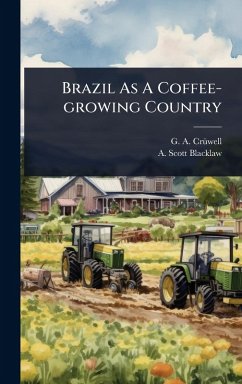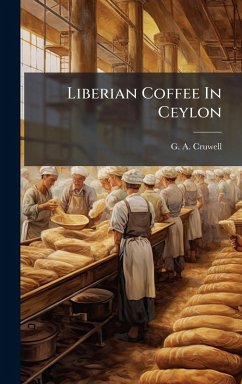
Brazil As A Coffee-growing Country, Its Capabilities, The Mode Of Cultivation, And Prospects Of Extension Described In A Series Of Letters To The "ceylon Observer," With The Latest Information From Other Sources
Versandkostenfrei!
Versandfertig in über 4 Wochen
30,99 €
inkl. MwSt.
Weitere Ausgaben:

PAYBACK Punkte
15 °P sammeln!
"Brazil As A Coffee-growing Country" offers a detailed examination of Brazil's coffee production in the late 19th century. Compiled from a series of letters to the "Ceylon Observer" and supplemented with additional sources, the book provides insights into the capabilities of Brazil as a coffee-growing nation, the methods of cultivation employed, and the prospects for the expansion of the industry. Authored by G. A. Cröwell and A. Scott Blacklaw, this work presents a comprehensive overview of the Brazilian coffee landscape, covering aspects such as suitable growing regions, cultivation techniq...
"Brazil As A Coffee-growing Country" offers a detailed examination of Brazil's coffee production in the late 19th century. Compiled from a series of letters to the "Ceylon Observer" and supplemented with additional sources, the book provides insights into the capabilities of Brazil as a coffee-growing nation, the methods of cultivation employed, and the prospects for the expansion of the industry. Authored by G. A. Cröwell and A. Scott Blacklaw, this work presents a comprehensive overview of the Brazilian coffee landscape, covering aspects such as suitable growing regions, cultivation techniques, labor practices, and the economic factors influencing the industry. It is a valuable resource for understanding the historical development of coffee production in Brazil and its impact on the country's economy and society. This work has been selected by scholars as being culturally important, and is part of the knowledge base of civilization as we know it. This work was reproduced from the original artifact, and remains as true to the original work as possible. Therefore, you will see the original copyright references, library stamps (as most of these works have been housed in our most important libraries around the world), and other notations in the work. This work is in the public domain in the United States of America, and possibly other nations. Within the United States, you may freely copy and distribute this work, as no entity (individual or corporate) has a copyright on the body of the work. As a reproduction of a historical artifact, this work may contain missing or blurred pages, poor pictures, errant marks, etc. Scholars believe, and we concur, that this work is important enough to be preserved, reproduced, and made generally available to the public. We appreciate your support of the preservation process, and thank you for being an important part of keeping this knowledge alive and relevant.










![The Letters of Nehemiah [Pseud.] Relating to the Laws Affecting Joint Stock Banks, and the Effects Likely to Be Produced, by the Measures of Sir Rober Cover The Letters of Nehemiah [Pseud.] Relating to the Laws Affecting Joint Stock Banks, and the Effects Likely to Be Produced, by the Measures of Sir Rober](https://bilder.buecher.de/produkte/68/68813/68813483n.jpg)

